 "QUANTUM SHOT" #30
"QUANTUM SHOT" #30Really bizarre monsters lived on Earth during the Cambrian Period. Stranger than many sci-fi aliens, in fact.
Discovered in 1909, in Canada's Rocky Mountains (Yoho National Park), the Burgess Shale contains tens of thousands of well-preserved fossils, some so bizarre, that they have no modern equivalent, leaving scientists guessing about how they were related to the rest of the animal world. The animals in the shale lived on or near the seabed and were victims of underwater avalanches, which trapped them almost instantly in fine-grained mud. Because the mud was soft and contained very little oxygen, it preserved its victims remarkably well.
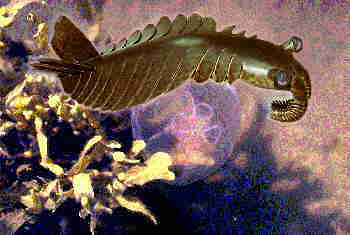
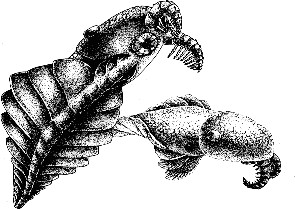
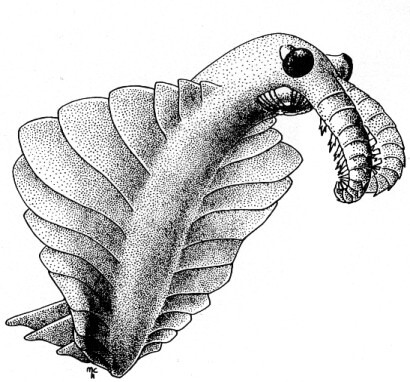
The Anomalocaris, or the "Unusual Shrimp", depicted on the images above, (source: The Anomalocaris Homepage) was over one meter long. It swam by rippling flaps along its sides, and it attacked its prey with a pair of fearsome mouthparts that looked like legs. However, its real mouth was disk-shaped and had an entirely science-fictional ring of teeth, used to crush hard-bodied prey. (see image below)
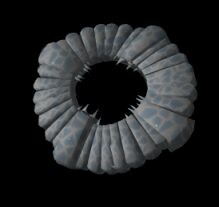
Ottoia was a soft-bodied burrowing worm with a spike-tipped proboscis that could be extended like a trunk. When the trunk made contact with anything edible, it was swallowed whole.
Stranger still is a mystery animal, called Opabinia (see image below). It had five eyes, a body divided into segments and a bizarre claw-tipped snout like a vacuum cleaner...
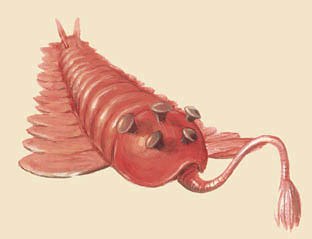
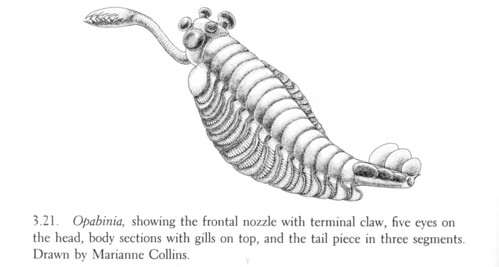
and Wiwaxia was like an armored cushion that cruised across the seabed:
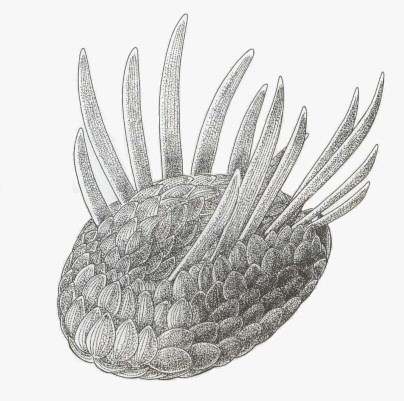
But strangest of all was a totally whacked-out creature, appropriately called Hallucigenia.The original fossil showed what seemed to be two rows of spiny legs and a set of short tentacles attached to a wormlike body without an obvious head. This Hieronymous Bosch nightmare originally has been reconstructed as walking on its spines and its soft tentacles waiving above it. This is how the mysterious monster appeared in publications at the time:
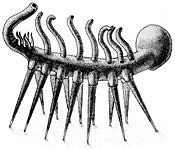
However, since then further fossils have shown that researchers had mistakenly put the animal upside down. Hallucigenia did walk on sort-of legs, after all.
UPDATE: November 29, 2006
Something strangely resembling the Anomalocaris was caught recently off the southern coast of Australia. Check out this link for the photo and discussion of what it could possibly be!..
Permanent Link...







0 comments:
Post a Comment